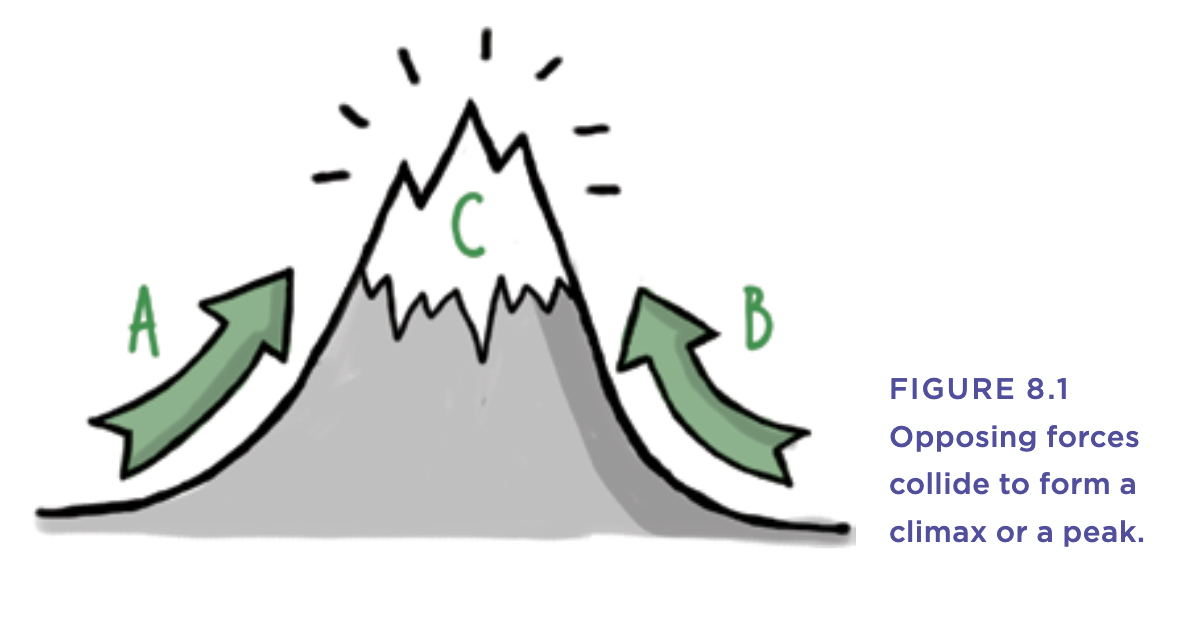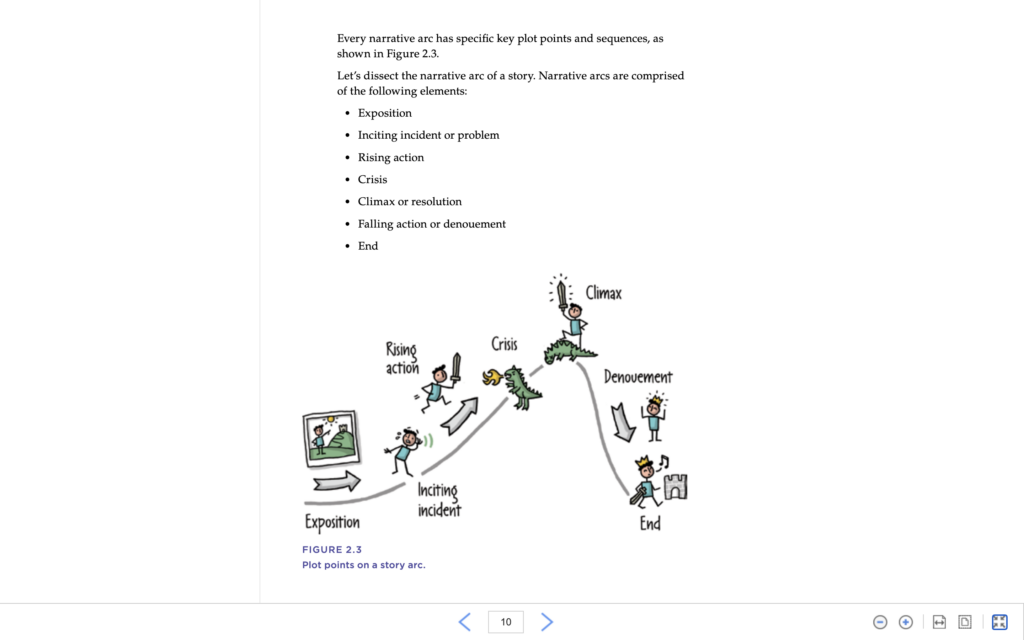As children, we were captivated by bedtime stories from our parents, and as we grew older, we found our storytelling fix in movies and TV shows. But have you ever wondered why some stories hold our attention while others make us want to skip to the next scene?
Storytelling is an ancient art that has been used to convey messages, entertain, and educate for centuries. However, creating a compelling narrative that captivates your audience can be challenging. Fortunately, Donna Lichaw, in her book “The User’s Journey: Storymapping Products That People Love,” outlines a step-by-step process for crafting engaging stories.
The seven elements of the narrative story map are exposition, inciting incident, rising action, crisis, climax, falling action, and end. In this blog post, I will explain each of these elements and provide insights on how to use them to craft a powerful story.
Exposition
Exposition refers to the introduction of the story’s setting, characters, and context. The first storytelling element sets the stage for the story, providing essential information to the audience to establish a clear understanding of the narrative’s world.
For example I will use a story about Sarah : Meet Sarah, a young professional who is tired of carrying around a bulky, heavy wallet. She has been using the same wallet for years, but it no longer meets her needs. Sarah wants a new wallet that is smaller, lighter, and made of real leather. She prefer a wallet made in Europe. Sarah needs a wallet that can hold her cards and cash without taking up too much space in her purse.
Inciting
The inciting incident is a crucial element in a brand storytelling as it creates a conflict that sets the character on a journey. This “conflict” often comes as a surprise, disrupting the character’s status quo, and forcing character to take action.
For example… One day, Sarah realised just how bulky her old wallet was. She struggled to find her wallet in the bag and decided it was time for a change. She believed a new, lighter wallet would make her life much easier and more organised. She decided to start her search for the perfect wallet.
Rising
“Action Rising” refers to the events that follow the inciting incident, leading the character towards their goal. By using this element you build a tension and create momentum that drives the story forward.
For example…Sarah started her search for a new wallet by browsing online and visiting local shops. She quickly found that there were many wallets on the market, but non met her criteria. Some were too big, some were made of fake leather, and some were not produced in Europe. Sarah became frustrated with her search.
Crisis
The crisis is crucial in the brand storytelling, where the characters face their most significant challenge. This often leaves the characters feeling helpless, making the story’s outcome uncertain.
For example…Sarah’s frustration reached a peak when she found the perfect wallet, but it was much too expensive for her budget. She felt like giving up on her search, as it seemed impossible to find a wallet that met all of her needs.

-
Climax
The climax is the story’s peak, where the character faces their challenge and determines the story’s outcome. Resolving the conflict, bringing the story to a satisfying conclusion.
For example… Just as Sarah was about to give up, she found a small leather goods shop that specialized in European products. She found a wallet that met all of her criteria – it was small, made of real leather, and produced in Europe. And, best of all, it was within her budget. Sarah was overjoyed and purchased the wallet on the spot.
Falling
Action The falling action refers to the events that follow the climax, leading the character towards the brand story’s resolution. This element provides closure to the story, tying up loose ends and answering any remaining questions.
For example… Sarah began to use her new wallet and found that it was just what she needed. It fit all of her cards and cash. She was able to easily find her wallet in her purse and felt more organized than ever before.
End
The end is the final element of the narrative story map, providing a sense of closure to the story. This element should leave the audience feeling satisfied, with a clear understanding of the story’s message.
In conclusion, creating a compelling brand story can be a powerful tool for building a loyal customer and increasing conversions. To create an effective brand storytelling , it’s crucial to start with research and gather as much information as possible about your target audience.
Personas are an excellent tool for data gathering and can provide valuable insights into your audience’s needs and desires.
Once you have gathered enough data, it’s time to draw a brand storytelling plot and start mapping out the customer journey. This will help you create a narrative that resonates with your audience and positions your brand as the solution to their problem.

By using brand storytelling, you can identify weak points in your brand and emphasise them in your UX design. This can lead to significant improvements in conversion rates, as shown by the example of the online training website in the images below.
In conclusion, by taking the time to craft a compelling brand story, you can create a narrative that resonates with your audience and positions your brand. This will lead to increased customer loyalty and success for your business.
Sourse of images and the concept : Lichaw, D. (2016). The User’s Journey: Storymapping Products That People Love. Rosenfeld Media.


